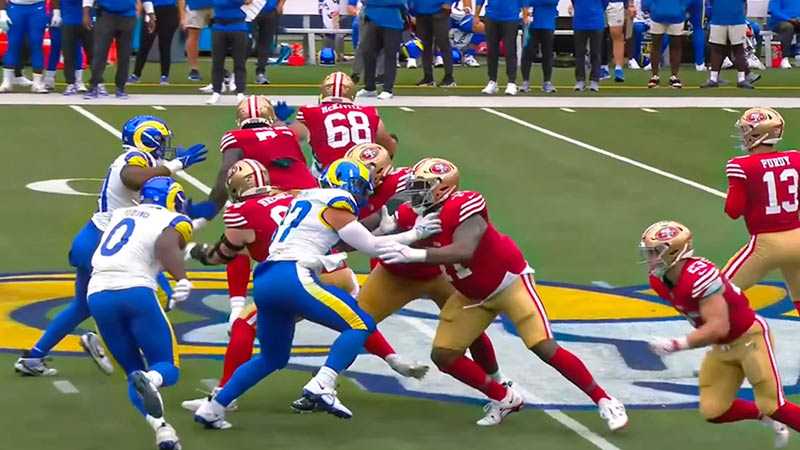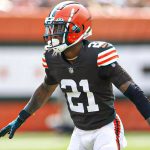Delving into the intricate world of American football strategy, the Cover 3 defense stands as a formidable shield against offensive onslaughts.
In this blog post, we will unravel the complexities of this tactical formation, understanding its origins, key components, and how it functions to thwart opponents on the gridiron.
As one of the staple defensive schemes in the sport, the Cover 3 demands a deep dive into its nuances, from the roles of cornerbacks and safeties to the linebackers’ pivotal contributions.
Gain insights into the psychology behind this defensive play and discover how it has evolved over the years to adapt to the game’s dynamic nature.
Whether you’re a seasoned football enthusiast or a newcomer to the sport, this exploration promises to deepen your understanding of the strategic chess match that unfolds on the football field.
What Is the American Football Cover 3 Defense?
The Cover 3 defense in American football is a popular zone coverage scheme where three deep defenders divide the deep portion of the field into thirds.
This arrangement provides a balance between defending against deep passes and maintaining coverage across the width of the field.
Typically employed in passing situations, the two cornerbacks and the free safety each cover their assigned deep third of the field, aiming to prevent long completions.
The four underneath defenders, usually linebackers and strong safetys, cover shorter zones to defend against intermediate passes and runs.
The Cover 3 is known for its simplicity and effectiveness in preventing big plays, making it a fundamental strategy for many defensive schemes.
However, its vulnerability lies in the intermediate zones, and offenses may exploit the gaps between the deep and underneath coverage.
The Basics of Football Cover 3 Defense
The Cover 3 defense is a popular defensive scheme in American football, and it is commonly used to defend against the pass.
In Cover 3, the defense divides the field into three deep zones, each covered by a deep defender, usually a safety. The goal is to prevent big passing plays by having defenders cover specific field areas.
Here are the basics of the Cover 3 defense:
Basic Alignment
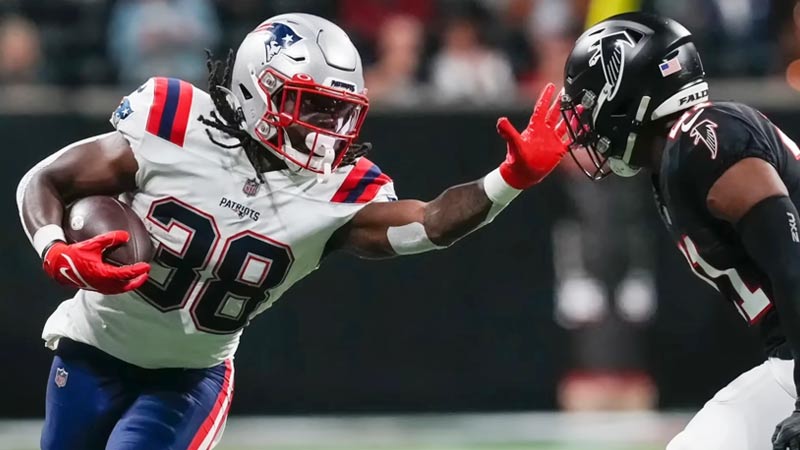
The defense typically has four defensive linemen, three linebackers, and four defensive backs. The four defensive backs usually consist of two cornerbacks and a free safety deep in the middle of the field.
Zone Coverage
Cover 3 is a zone coverage scheme. Each deep defender covers a third of the field deep downfield. The cornerbacks cover the deep sidelines, while the free safety covers the deep middle.
Responsibilities
- Cornerbacks: Are responsible for covering the deep outside thirds of the field. They must prevent deep passes along the sidelines and may also be involved in run support.
- Free Safety: Free safety is responsible for covering the deep middle third of the field. They need to read the quarterback’s eyes and react to the play.
- Linebackers: The linebackers and underneath defenders are responsible for covering the short and intermediate areas of the field, helping to defend against short passes and runs.
Pass Rush
In Cover 3, the pass rush is crucial. The defensive linemen and blitzing linebackers aim to pressure the quarterback to disrupt the timing of the passing game.
The pass rush must be effective enough to force the quarterback to make quick decisions, ideally leading to incompletions or turnovers.
Weaknesses
While Cover 3 is effective against deep passes, it does have vulnerabilities. The seams between the deep thirds and the intermediate areas can be exploited by well-designed offensive plays.
Quick passes and well-timed route combinations can challenge the coverage.
Adjustments
Defensive coordinators may adjust based on the offensive formation, down-and-distance situations, and the opposing team’s tendencies.
This could involve rolling coverage, disguised coverages, or additional pressure.
Communication
Communication is key in the Cover 3 defense. Defenders must communicate effectively to ensure that each zone is properly covered and everyone is on the same page.
Overall, the Cover 3 defense is a foundational scheme that provides a good balance between defending against the run and the pass.
It requires disciplined defenders who can read the quarterback, communicate well, and execute their responsibilities within the assigned zones
Key Players and Positions in Cover 3 Defense
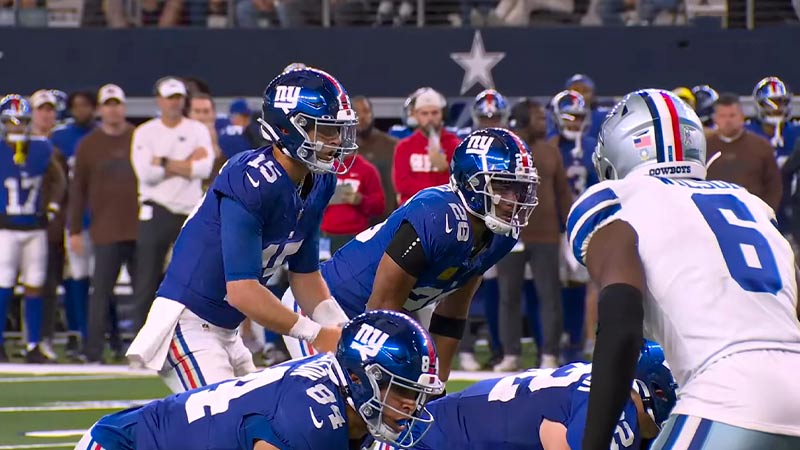
In a Cover 3 defense, the key players and positions include:
Cornerbacks (CB)
These players are responsible for covering the deep outside thirds of the field. They need to prevent receivers from getting behind them along the sidelines.
Free Safety (FS)
The free safety is a critical player in Cover 3. Positioned deep in the middle of the field, the free safety is responsible for covering the deep middle third.
They need to read the quarterback’s eyes, react to the play, and provide help over the top.
Linebackers (LB)
The linebackers in a Cover 3 defense are responsible for covering the short and intermediate areas of the field.
They need to be able to drop into coverage effectively, covering crossing routes and short passes while also being aware of potential runs.
Defensive Linemen (DL)
The defensive linemen play a crucial role in the pass rush. While they are not directly involved in coverage, their ability to pressure the quarterback is essential in disrupting the passing game.
Strong Safety (SS)
In some variations of Cover 3, a strong safety may be present. Strong safety can have various responsibilities, including providing run support and coverage underneath.
However, the primary deep coverage responsibilities lie with free safety.
Defensive Coordinators (DC)
The defensive coordinator is not a player on the field, but they play a vital role in designing and calling the defensive scheme.
The DC adjusts based on the opponent’s offense, personnel, and game situations.
Each position has specific responsibilities within the Cover 3 scheme, working together to create a strong and effective defense against the pass.
The success of the Cover 3 defense relies on the communication and coordination of these players to cover their assigned zones and react to offensive plays.
Advantages of Cover 3 Defense in Football
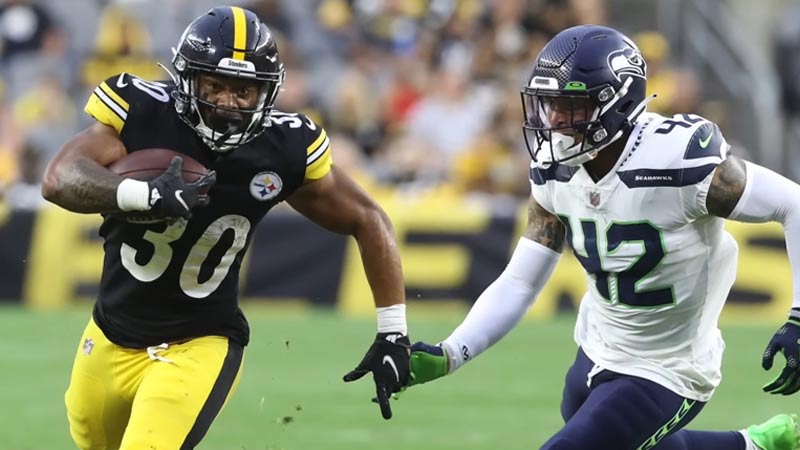
The Cover 3 defense in football offers several advantages, making it a popular choice for many teams. Here are some of the key advantages:
Deep Pass Coverage
Cover 3 is designed to prevent big plays in the passing game by dividing the deep part of the field into three zones. With two cornerbacks and a free safety each responsible for a deep third, the defense can effectively limit deep passes.
Versatility Against the Run
While Cover 3 is primarily a pass defense, it can be adaptable against the run. The four defensive linemen and linebackers can provide solid run support, making it a balanced scheme.
Balanced Field Coverage
Cover 3 provides balanced coverage across the entire field. With each deep defender responsible for a third of the field, offenses find it challenging to exploit one side consistently.
Prevention of Explosive Plays
The primary goal of Cover 3 is to prevent explosive plays, especially deep passes. By having defenders deep in coverage, the defense aims to limit the offense’s ability to gain significant yardage in a single play.
Read-and-React Capability
The Cover 3 defense relies on defenders reading the quarterback’s eyes and reacting to plays. This allows for quick adjustments and the ability to respond to different offensive schemes and formations.
Simplicity and Communication
Cover 3 is known for its relative simplicity compared to more complex defensive schemes. This simplicity can lead to better communication among defenders, reducing the likelihood of blown coverages.
Pass Rush Emphasis
The scheme emphasizes a strong pass rush to disrupt the timing of the opposing quarterback. By pressuring the quarterback, the defense can force quick decisions and potentially create turnovers.
Limiting Yards After the Catch
With defenders dropping into zones, there is often support for short and intermediate routes. This can limit yards after the catch and make it difficult for offenses to gain significant yardage on quick passes.
Personnel Flexibility
Cover 3 can be adapted to the strengths of a team’s personnel. Whether a team has exceptional cornerbacks, a standout free safety, or strong pass rushers, the Cover 3 scheme can be adjusted to optimize player skills.
While the Cover 3 defense has its advantages, it’s essential to note that no defense is foolproof, and successful execution depends on factors such as the quality of personnel, coaching, and the ability to make in-game adjustments.
Strategies for Success in Football Cover 3 Defense
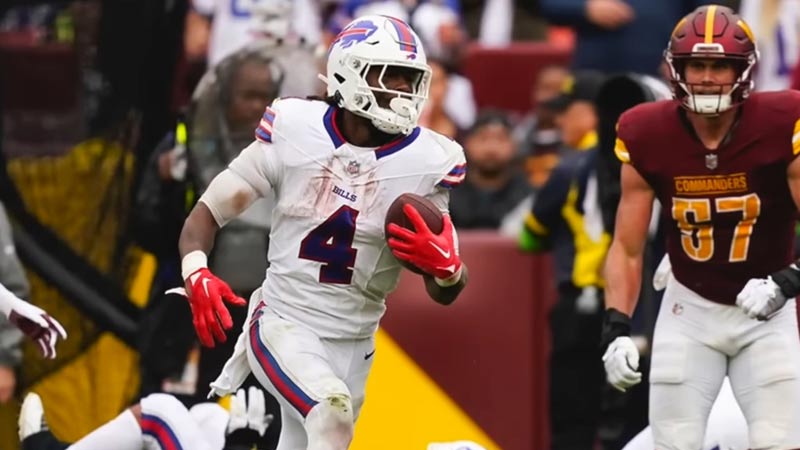
To succeed with the Cover 3 defense in football, teams must implement specific strategies and execute them effectively. Here are key strategies for success in the Cover 3 defense:
Disciplined Zone Coverage
Players must maintain discipline in their assigned zones. Corners should cover the deep outside thirds, the free safety the deep middle, and linebackers the short and intermediate areas.
Deviating from these responsibilities can lead to openings for the offense.
Effective Communication
Communication is crucial in any defense, and it’s especially important in Cover 3. Defenders must communicate pre-snap adjustments, offensive formations, and potential threats during the play to ensure everyone is on the same page.
Read and React
Defenders, particularly the free safetys and linebackers, must read the quarterback’s eyes and react quickly to the play. This includes recognizing play-action, screens, and other offensive strategies to make timely decisions.
Strong Pass Rush
A successful Cover 3 defense often relies on an effective pass rush. Defensive linemen and blitzing linebackers must pressure the quarterback to disrupt the timing of passes and force hurried decisions.
Solid Tackling
Since Cover 3 often gives up short and intermediate completions, defenders must be excellent tacklers to limit yards after the catch. Sound tackling prevents short completions from turning into big gains.
Versatility in Personnel
Coaches should tailor the Cover 3 scheme to the strengths of their personnel.
Whether a team has elite cornerbacks, ball-hawking free safety, or dominant pass rushers, the defense can be adjusted to maximize the players’ strengths.
Preventing Seam Routes
One vulnerability in Cover 3 is the seam route, where a receiver attacks the area between the deep thirds. Safeties and linebackers must be alert to seam routes and work together to prevent big plays down the middle of the field.
Mixing Coverages
While Cover 3 is a base defense, incorporating variations and disguises can keep offenses guessing. Mixing in man coverage, Cover 2, or other zone coverages occasionally can add complexity for opposing quarterbacks.
Adaptability to Offensive Formations
Defensive coordinators should be adept at adjusting Cover 3 to different offensive formations.
This may involve shifting coverage, adjusting the depth of defenders, or bringing additional players into coverage based on the offensive set.
Film Study
An in-depth film study is crucial for understanding opponents’ tendencies, identifying key players, and recognizing offensive patterns.
This knowledge allows defenders to anticipate plays and make better-informed decisions during the game.
Successful implementation of these strategies requires a combination of coaching, player skill, and effective in-game adjustments. A well-executed Cover 3 defense can be a formidable weapon against opposing passing attacks.
FAQs
What is the Cover 3 defense in American football?
The Cover 3 defense is a defensive strategy where three deep defenders divide the deep part of the field into thirds.
This arrangement aims to provide strong pass coverage while allowing for flexibility in defending both short and deep routes.
How does the Cover 3 defense work?
In Cover 3, the two cornerbacks and the free safety each cover a deep third of the field.
This distribution helps prevent big passing plays, as defenders are positioned to defend against deep throws. The four underneath defenders handle short and intermediate routes, creating a well-rounded defensive scheme.
What are the key responsibilities of players in the Cover 3 defense?
Cornerbacks are responsible for their deep thirds along the sidelines, while the free safety covers the deep middle. Linebackers and strong safety defend the underneath zones.
This collaboration ensures comprehensive field coverage and minimizes vulnerabilities against various offensive schemes.
When is the Cover 3 defense commonly used?
Coaches often deploy the Cover 3 defense when they want to limit deep passing threats. It’s effective against offenses that rely heavily on the passing game.
Teams may also use it on early downs or in standard situations, aiming to control the field and force the offense into unfavorable positions.
What are the potential weaknesses of the Cover 3 defense?
While strong against deep passes, the Cover 3 defense can leave seams in the intermediate zones, creating opportunities for well-executed short to mid-range passes.
Additionally, skilled quarterbacks and receivers may exploit the gaps between defenders, requiring precise execution and communication for effective coverage.
Wrapping Up
The American Football Cover 3 Defense is a strategic cornerstone in the sport, emblematic of a team’s commitment to balance and adaptability on the field.
This defensive scheme, characterized by three deep zone defenders, effectively blankets the field, mitigating both short and deep passes.
Its success hinges on a delicate equilibrium between disciplined zone coverage and the ability to disrupt offensive plays.
As we unravel the layers of Cover 3, it becomes evident that its tactical nuances empower teams to thwart diverse offensive strategies.
The beauty of this defense lies in its versatility, allowing coaches to tailor it to their team’s strengths and exploit opponents’ weaknesses.
In grasping the intricacies of Cover 3, players and enthusiasts alike gain a deeper appreciation for the cerebral aspect of American football, where strategy and execution converge for gridiron success.

